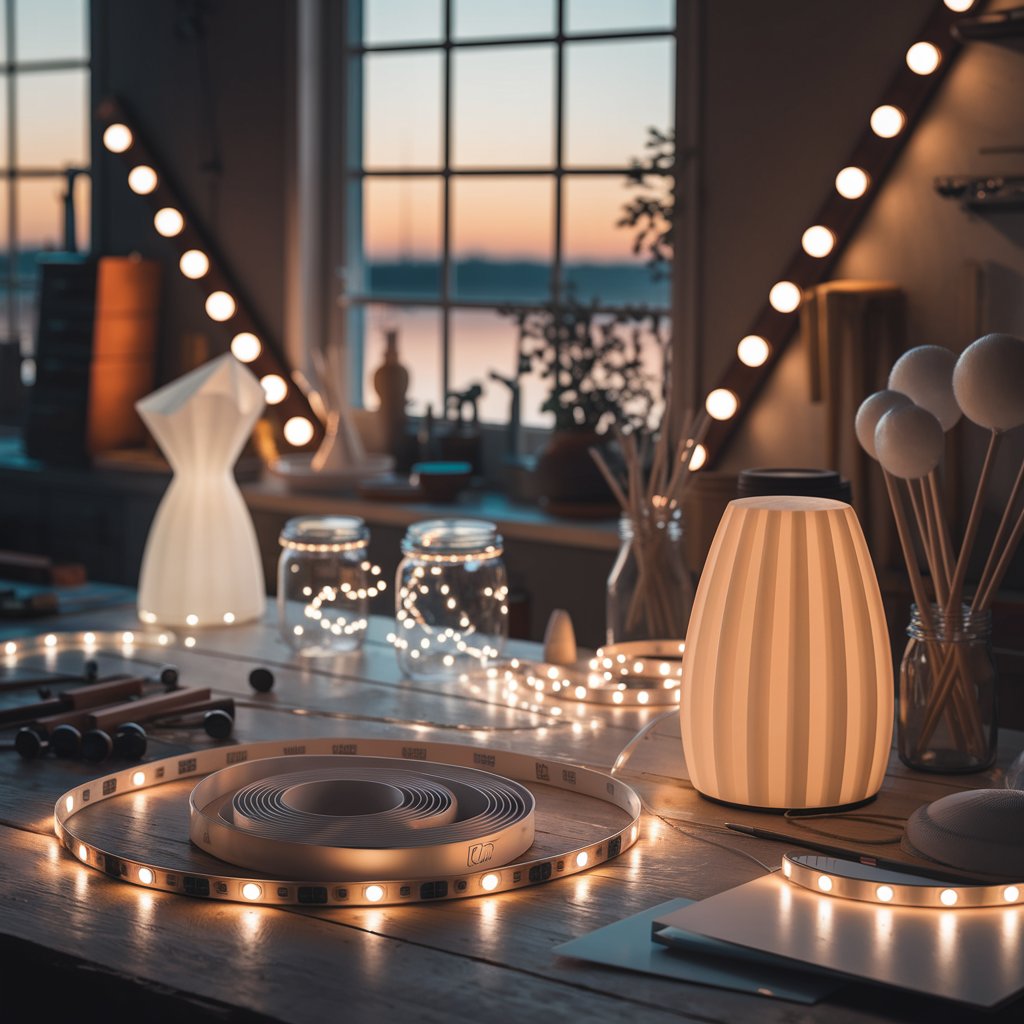Introduction
Ambient lighting can transform any room, creating a cozy and inviting atmosphere perfect for relaxation, reading, or entertaining. If you’re looking for a budget-friendly, creative way to enhance your home’s ambiance, DIY ambient lighting is the perfect solution. In this tutorial, we’ll show you how to make your own ambient lighting using simple materials, so you can enjoy a warm and stylish glow at home. Whether you’re a beginner or a seasoned DIY enthusiast, this guide will provide you with all the steps you need.
Table of Contents
- What is Ambient Lighting?
- Benefits of DIY Ambient Lighting
- Materials You’ll Need for DIY Ambient Lighting
- Step-by-Step Guide: How to Create DIY Ambient Lighting
- Step 1: Choosing Your Lighting Type
- Step 2: Gathering Materials
- Step 3: Assembling Your DIY Ambient Light
- Step 4: Placement Tips for Maximum Effect
- Creative Ideas for DIY Ambient Lighting
- Troubleshooting Common Problems
- Conclusion
1. What is Ambient Lighting?
Ambient lighting refers to the general lighting that fills a room with a soft, even glow. It’s designed to eliminate harsh shadows and brighten a space without being overwhelming. It’s different from task lighting, which is focused on specific activities like reading or cooking. Ambient lighting sets the mood and tone of the room, making it an essential component of any well-designed space.

2. Benefits of DIY Ambient Lighting
Creating your own ambient lighting offers several advantages:
- Customizable: You can design the lighting to match your personal style and the specific needs of your room.
- Affordable: DIY ambient lighting is often cheaper than purchasing pre-made lighting solutions.
- Creative Control: You have full control over the brightness, color, and positioning, ensuring it complements the room’s aesthetic.
3. Materials You’ll Need for DIY Ambient Lighting
Before starting, gather the following materials for your DIY ambient lighting project:
- LED strip lights or fairy lights
- String lights (optional for added effect)
- Power supply or batteries
- Light diffusers (optional for a soft, warm glow)
- Decorative elements like mason jars, glass bowls, or wooden boxes
- Tape or mounting hooks (for securing lights)
Keywords: LED strip lights, fairy lights, light diffusers, decorative elements, DIY lighting materials
4. Step-by-Step Guide: How to Create DIY Ambient Lighting
Step 1: Choosing Your Lighting Type
The first step in your DIY ambient lighting project is choosing the type of light source. LED strips and fairy lights are the most popular choices due to their flexibility and low energy consumption. LED strip lights can be mounted along walls or ceilings, while fairy lights can be placed inside glass jars or woven through furniture.
Keywords: LED strip lights, fairy lights, energy-efficient lighting
Step 2: Gathering Materials
Now that you’ve chosen your lighting type, gather all the materials listed above. You’ll need to measure the space where you want to place the lights to ensure you have enough length for the LED strips or fairy lights.
Keywords: materials for DIY lighting, gather lighting materials
Step 3: Assembling Your DIY Ambient Light
Start by placing your LED strips or fairy lights where you want them. If you’re using LED strips, stick them along the edges of furniture, under cabinets, or behind a TV to create an indirect glow. If you’re using fairy lights, place them in decorative containers or wrap them around objects like shelves or mirrors for a soft, diffused light effect.
Secure the lights with tape or hooks to ensure they stay in place. If using light diffusers, install them between the light source and the surface for an even, gentle glow.
Keywords: assembling DIY lighting, ambient light assembly, light placement tips
Step 4: Placement Tips for Maximum Effect
The key to creating effective ambient lighting is placement. Aim for indirect lighting sources that bounce off walls or ceilings for a soft, diffused effect. Avoid placing lights directly in your line of sight to prevent glare. For the best results, try to combine multiple lighting sources in different areas of the room.
Keywords: lighting placement, indirect lighting, diffused lighting
5. Creative Ideas for DIY Ambient Lighting
Here are a few creative ideas to inspire your DIY ambient lighting project:
- Hanging String Lights: Create a canopy of lights above your bed or seating area to add a magical atmosphere.
- Mason Jar Lights: Place LED lights inside mason jars for a rustic, warm glow that adds charm to your living room or dining area.
- Backlit Mirrors: Install LED strips behind mirrors to create a sleek, modern look.
- Floating Lights: Use LED strips under floating shelves for a modern, floating effect.
Keywords: creative lighting ideas, mason jar lights, backlit mirrors, floating lights
6. Troubleshooting Common Problems
While creating your DIY ambient lighting, you may encounter a few challenges. Here are solutions to some common problems:
- Lights Not Turning On: Check the power supply and ensure the batteries or adapter are properly connected.
- Lights Too Bright: Use light diffusers or reduce the intensity of your LED lights if the glow is too harsh.
- Lights Not Staying in Place: Use stronger tape or mounting hooks if the lights are slipping.
Keywords: troubleshooting DIY lighting, DIY lighting problems, fix lighting issues
7. Conclusion
DIY ambient lighting is a simple yet impactful way to transform any room. With just a few materials and a little creativity, you can create a cozy, inviting atmosphere that suits your style. Whether you’re adding a soft glow to your living room, bedroom, or kitchen, these DIY tips and tricks will help you create the perfect ambient lighting setup.